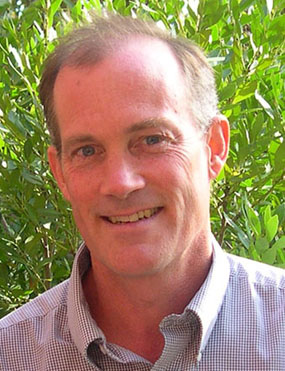In the mid-1990s, David Rand was one of three faculty who proposed that Brown University offer an undergraduate concentration in computational biology. Nearly two decades later, the biology professor has become director the entire Center for Computational Molecular Biology.

His three-year term comes at an interesting time. Brown has recruited the faculty, obtained the equipment, and gained the University’s blessing to move the program forward. At the same time, computational biology has matured to the point where it’s treated as a field unto itself.
“Mining information was a computational problem, but asking the right questions was a biology problem,” Rand said, “and therein lies the crux of the need for computational biology.”
Rand, who began his term as director Aug. 1, succeeds Sorin Istrail, the computer science professor who launched the center’s Ph.D. program, among other achievements. Rand said his main goal is “to open the floodgates between computer science and (the Division of) Biology and Medicine. It became clear that more and more biologists have realized the need to have more and more computational skills, and CCMB needed to grow more toward bio-med to broaden the interface between computer science and bio-med.”
The center trains students in computational, mathematical, and statistical sciences while providing a foundation in molecular biology. Currently there are five faculty members hired through the center — Charles Lawrence in applied mathematics, Istrail and Ben Raphael in computer science, and Sohini Ramachandran and Daniel Weinreich in ecology and evolutionary biology. There are two students in the Ph.D. program, although Rand said that he plans to recruit four graduate students per academic year, of which two will come from the Division of Biology and Medicine.
In recent years, Brown has invested in the infrastructure that will help the CCMB to grow. The University installed a supercomputer on campus, the fruits of a partnership with IBM, to handle the data loads generated by computational biologists and other scientists. Two next-generation DNA sequencing instruments have been acquired, a fundamental tool in genomics, proteomics and other scientific pursuits. The equipment doesn’t mean Brown will compete in data generation, Rand said, but the University can look to its faculty to pose interesting questions stemming from the data and to partner across academic lines to apply for research funding.
“We’re not going to retool (the center),” Rand said. “We’re going to clarify the themes that exist and the faculty’s needs and interests.”
